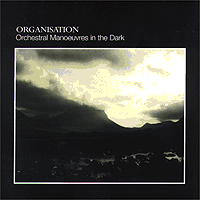 Orchestral Manœvers in the Dark OMD's blippy and bleak second album becomes something kinda great with the addition of six bonus tracks—mainly moody synth experiments that push the album further out, almost to the quality of Bowie's Low and Moby's Play (both albums that kick off boldly and wind down in a brilliantly blurry haze). It opens with "Enola Gay," one of the band's very best singles, and then settles into a dark and ruminative vibe with loads of atmospheric drum machines and synth lines. As with all OMD material, your enjoyment depends on your stomach for the lead vocals, which frequently sound like your drunk best friend trying to attain karaoke superstardom. This aspect is predominant on a cover of "The More I See You," which certainly must be the group's idea of a joke, though it's neither a very good performance nor a very good joke. But the rest of it coasts along nicely, hovering like a foggy and vague depression that you can't quite put your finger on. Strangely, the disc becomes infinitely more interesting around track 12 ("Distance Fades Between Us"), which is three songs into the newly-added material. At this point the whole thing gels as a minor classic—like, if Joy Division is Monet and Gary Numan is Renoir, OMD here is something like Pissaro in his prime. Not quite a masterpiece, but a real connoisseur's choice. "Once When I Was Six" is another great ambient synth excursion—almost like the boys were listening to Kitaro, which is entirely unlikely. But hey, cœrval literary and philosophical figures have stumbled onto similar ideas independently throughout history—why not 1980 Earthmen with synthesizers? Hm, this has turned out rather highfalutin for a review of a synthpop album. Forgive me, it must have been the fancy ligature in the word "Manœvers" that set me off.
Review by La Fée |